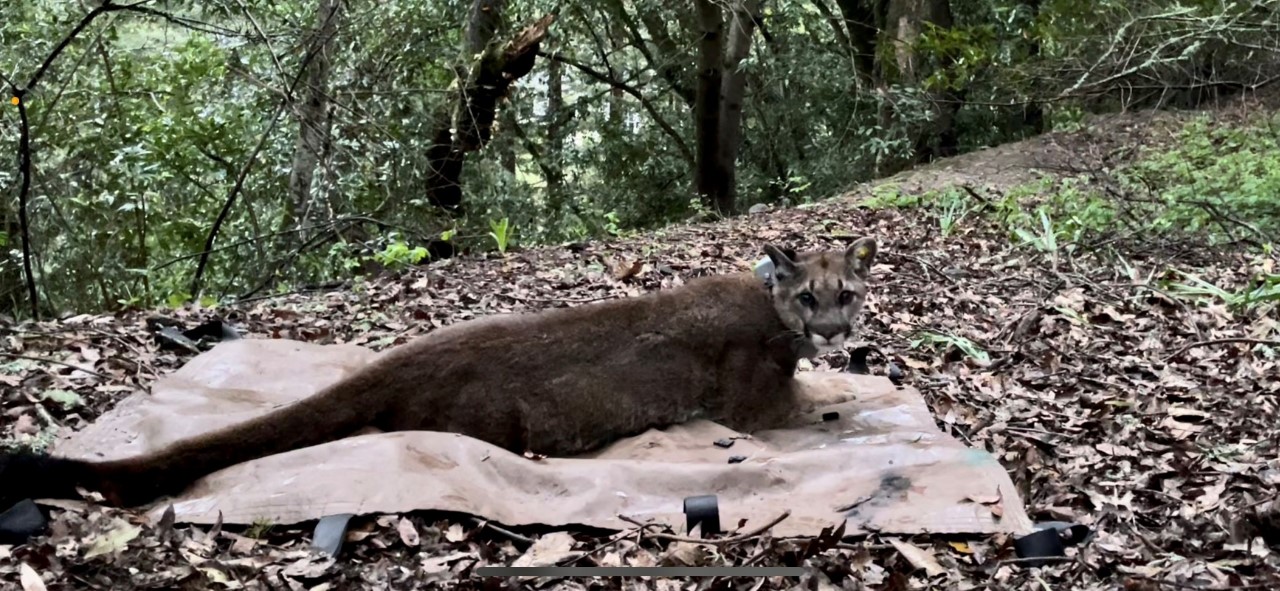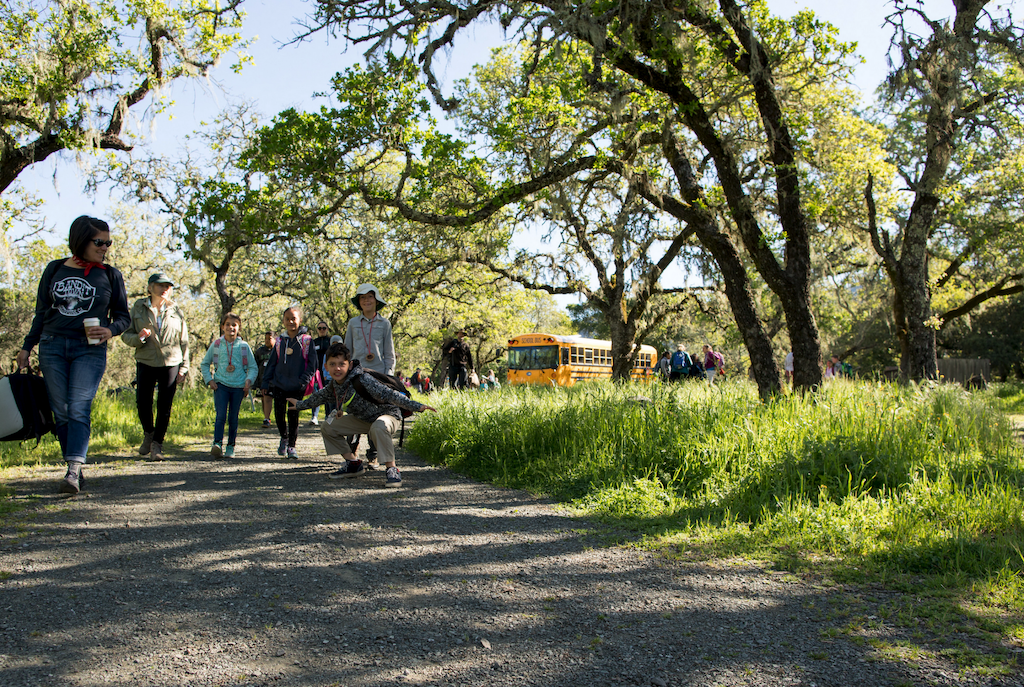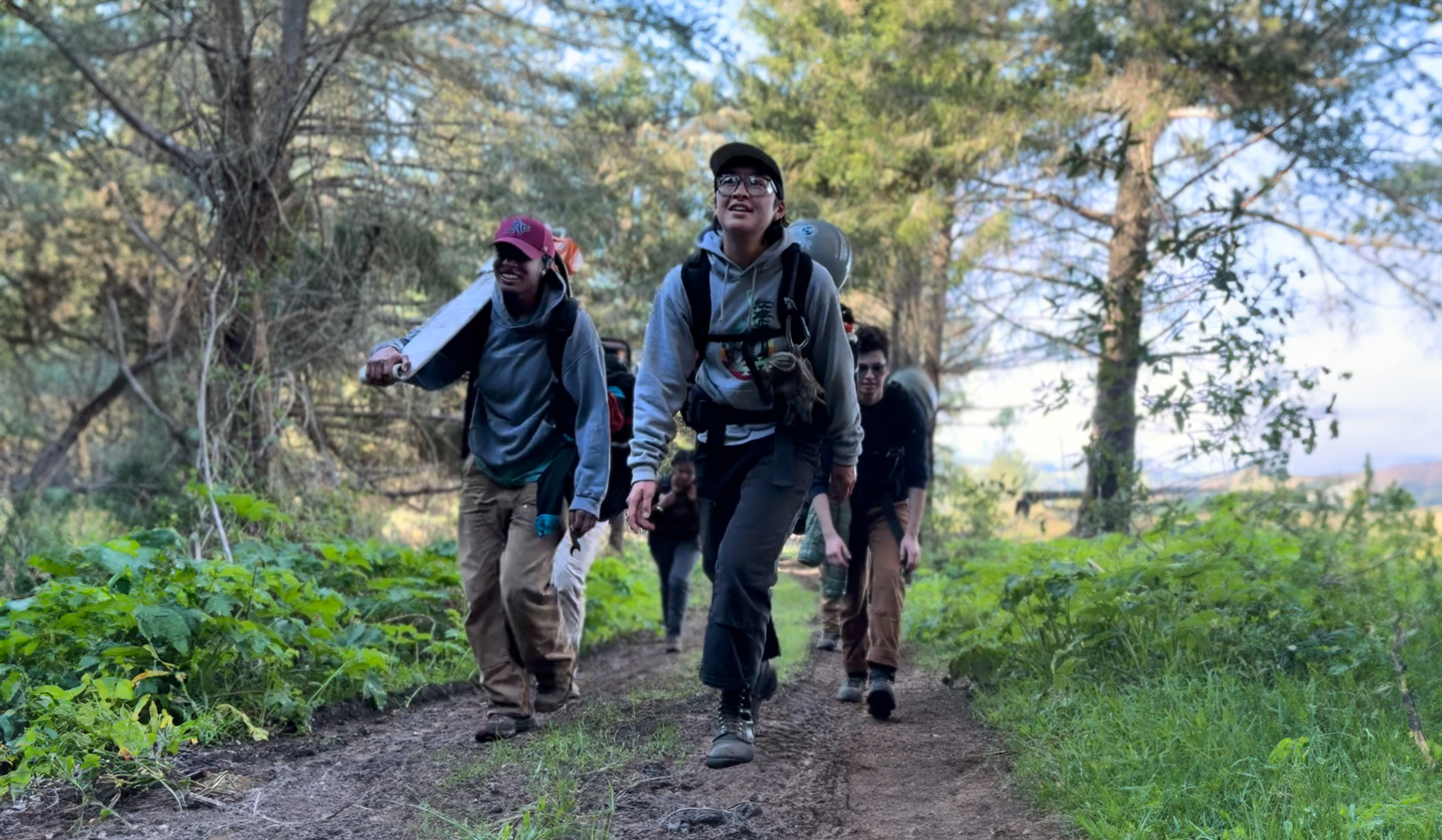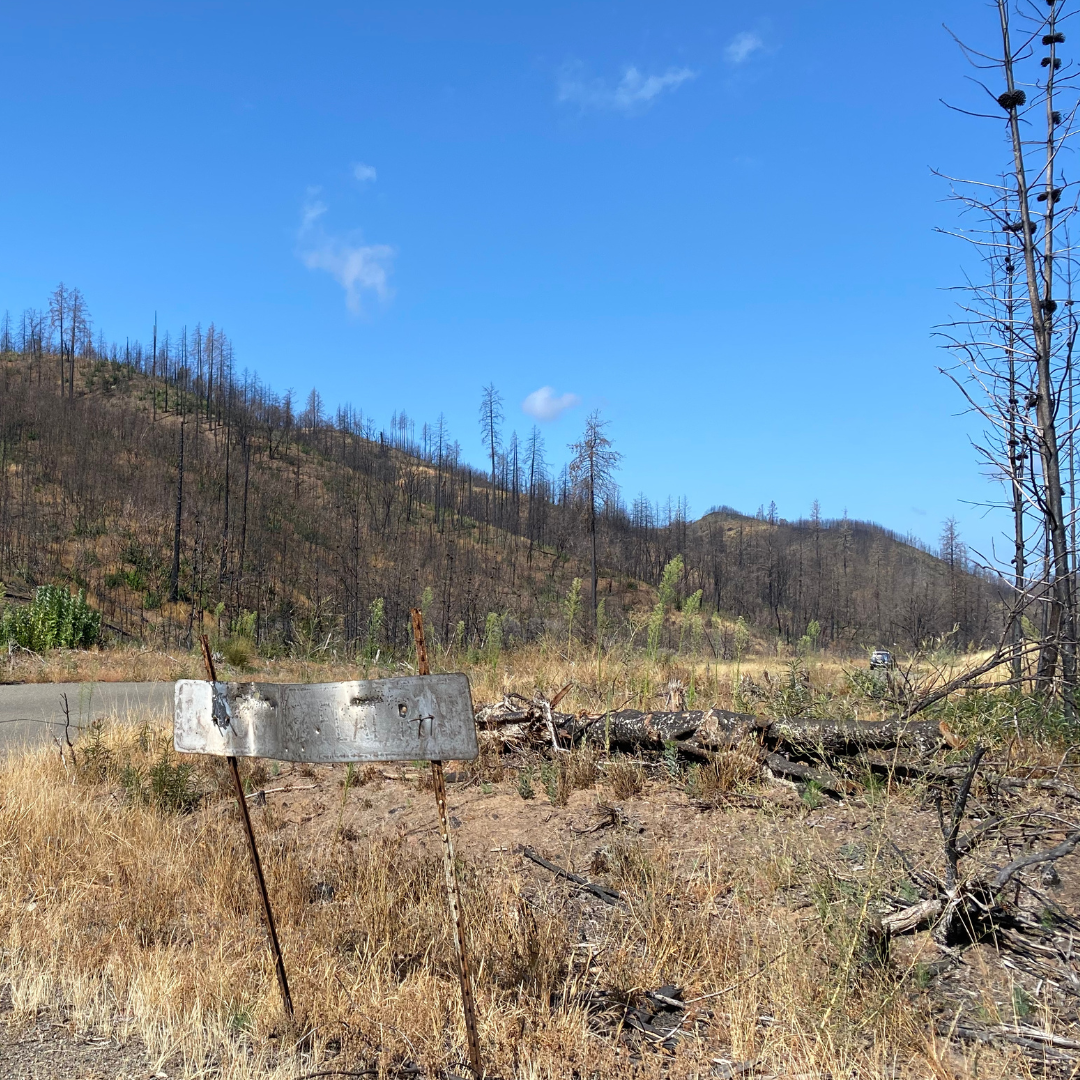Young male lion spotted in Tiburon as he seeks territory to call his own
P36, a young male mountain lion, became the first collared lion to venture into Marin County late last year. A recent foray took him east over Highway 101 into Tiburon, where he was spotted on backyard cameras and caused a buzz on the neighborhood connections app Nextdoor.
P36 was collared by our Living with Lions team on March 3, 2022, in Taylor Mountain Regional Park with the support of Sonoma Regional Parks. We believe he is the offspring of female P12 and part of a massive litter of five cubs who all survived to dispersal age (when lions travel away from their home range in search of an area to establish as their own). Two days after being collared with a GPS radio tracking device, he left the area and headed north-east. It appeared he had his eye on Mount St. Helena, the highest point nearby with an elevation of 4,312 feet and bordering Lake, Napa, and Sonoma Counties. He skirted the mountain heading north, but soon thereafter returned from Lake County to spend a few months in the Healdsburg area (Fig 1).
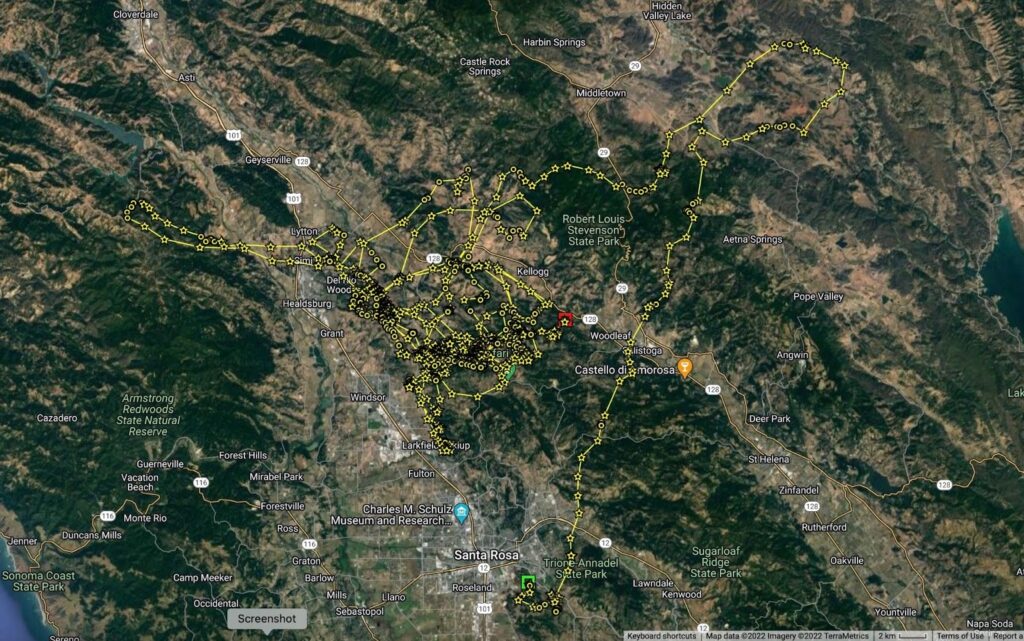
Over the river and through the woods
In November, P36 moved south and safely crossed Highway 101 north of Healdsburg before crossing the Russian River. A GPS location we received showed him reaching the Pacific coastline at a waterfront parking area in Bodega (Fig. 2). He’s since headed further south, visiting hundreds of private ranches, Point Reyes National Seashore, Muir Woods National Monument, Indian Tree Open Space Preserve, and even popular the Golden Gate Bridge vista points (Fig. 3). Over the course of our tracking, he’s fed largely on blacktailed deer, but also added some variety to his diet with wild boar, badger, otter, and squirrel.

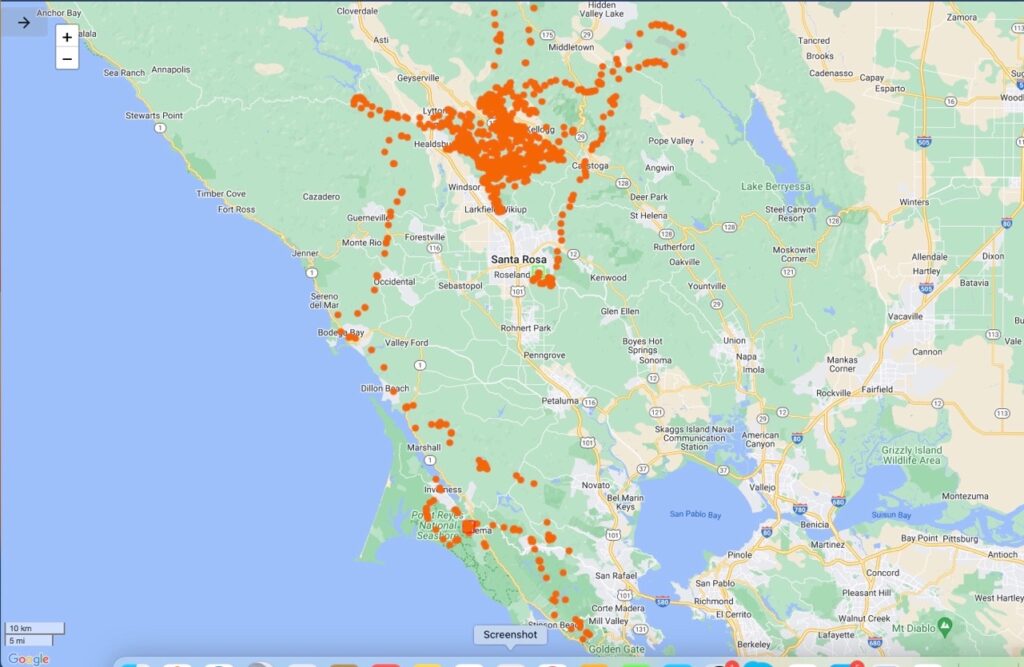
The solitary, strategic trek to find a territory
Mountain lions are solitary cats. Typically, the only time mountain lions are together is when a mom has her offspring with her (when older they can be as big or bigger than her), or when a male and female are mating for a couple of days. Young mountain lions, particularly males, are forced to leave their natal range somewhere between 12 and 18 months old. These dispersal individuals will then move around for some time trying to avoid conflict with older, territorial adult lions until they are mature and strong enough to challenge for a territory of their own. During this time, they may use sub-optimal habitat to avoid bumping into adult established lions. Males usually disperse further than females. In 2011, a male lion was hit and killed by a car in Connecticut after travelling over 1,700 miles from the Black Hills in South Dakota!
North Bay is the “end of the road” for southbound mountain lions
One interesting aspect of the movement of dispersal animals is understanding the cues that lead them to choose a particular route or direction when dispersing. P36 has provided us with some interesting data to analyze. His routes often seem connected to elevated places in the landscape, and it appears he selects what looks like a suitable area from a distance and then heads in that general direction. Mountain lions usually select areas with cover and use creeks or drainages to travel. These riverine areas can be key corridors for the younger lions to move through urban or densely human populated areas. Mountain lions are excellent indicators of whether there is sufficient natural connectivity for wildlife in an area.
The North Bay of California is a particularly interesting area to study mountain lions as it is effectively the “end of the road” for any dispersal cats moving down from their northern source populations. Mountain lions are unlikely to cross into the South Bay from Marin, Sonoma, and most of Napa.
Will P36 avoid being hit by a car (the second biggest threat to mountain lions in California), and if he does, will he be able to settle into the Marin area and establish his own territory? If not, where will he head next?
